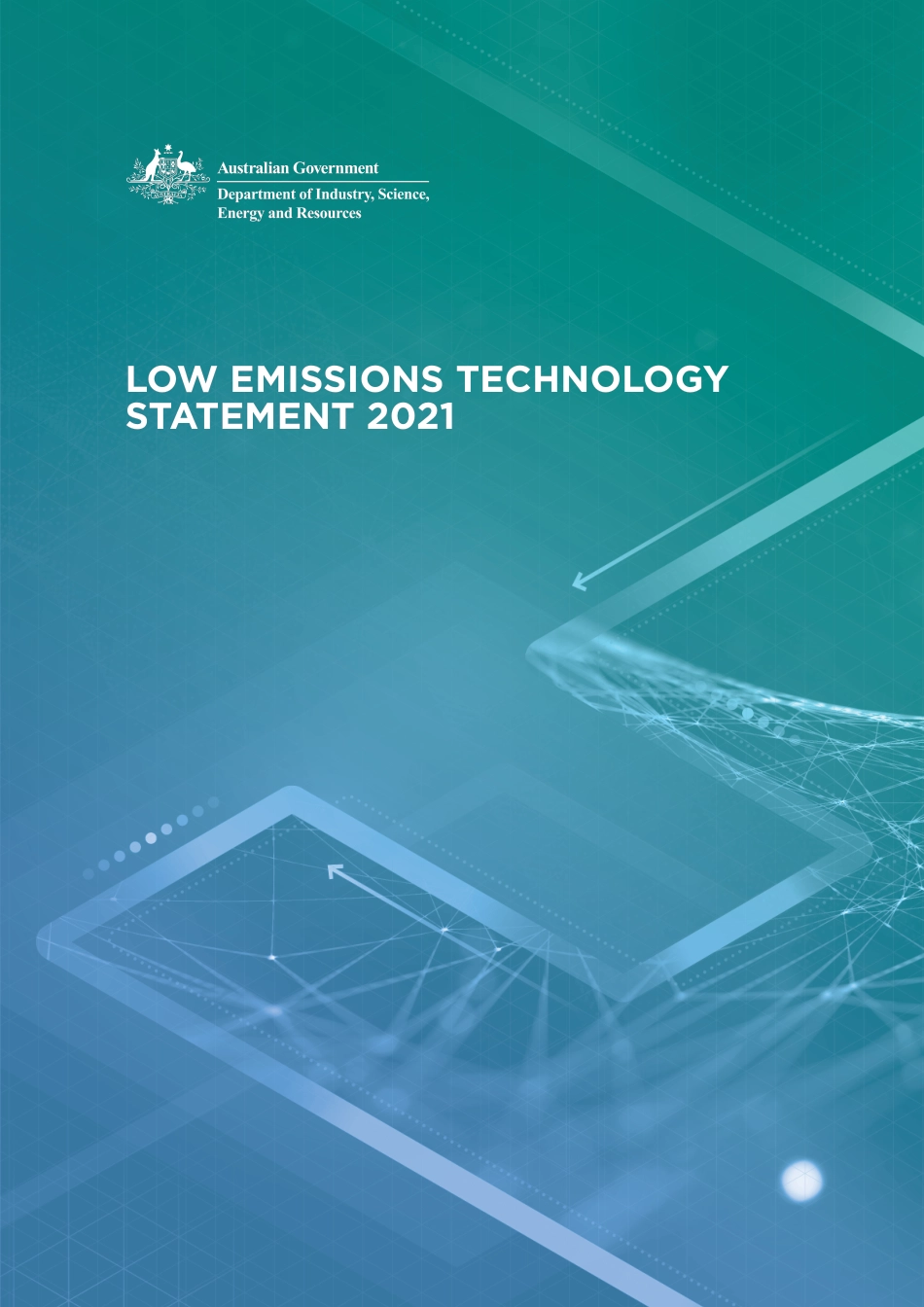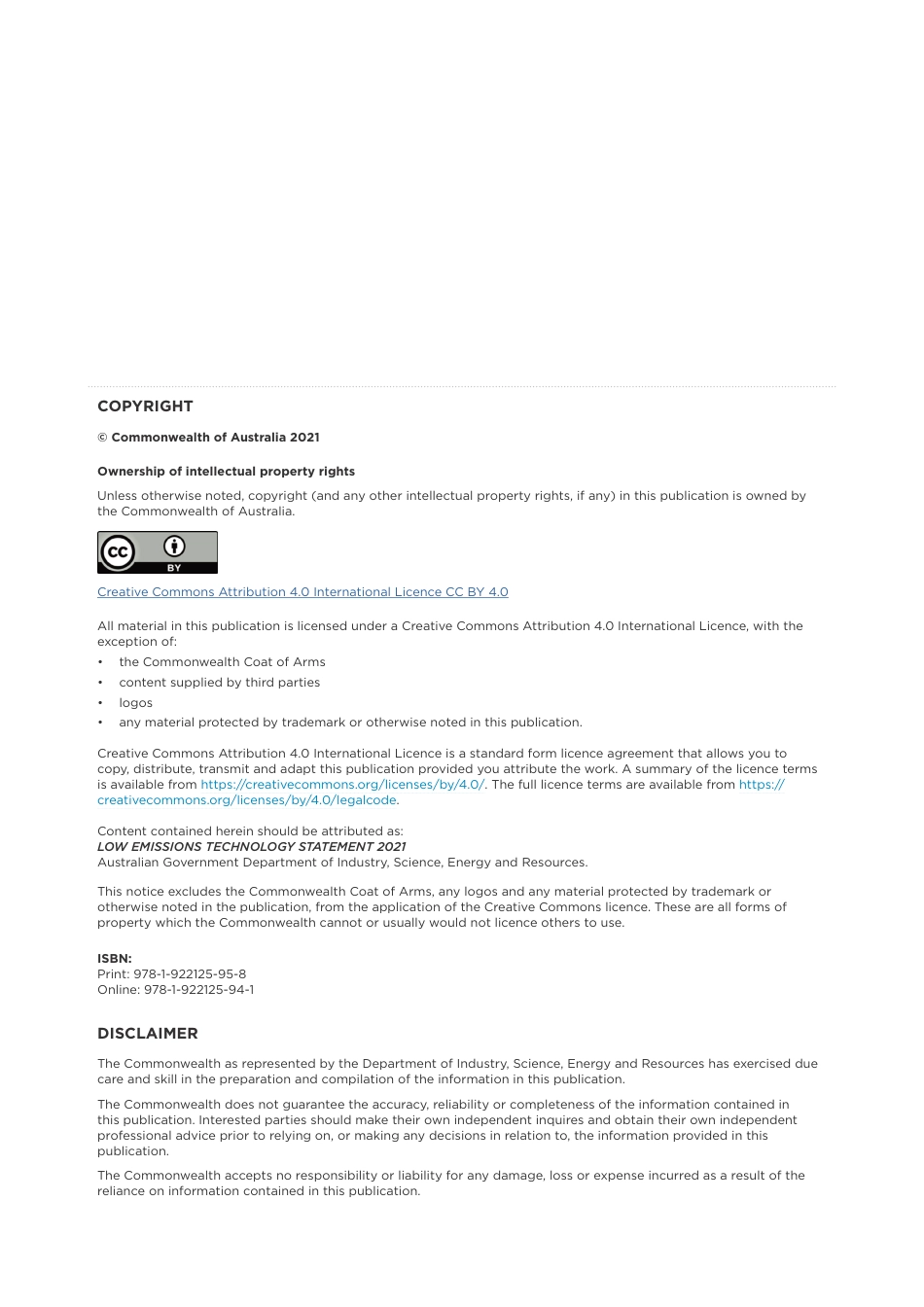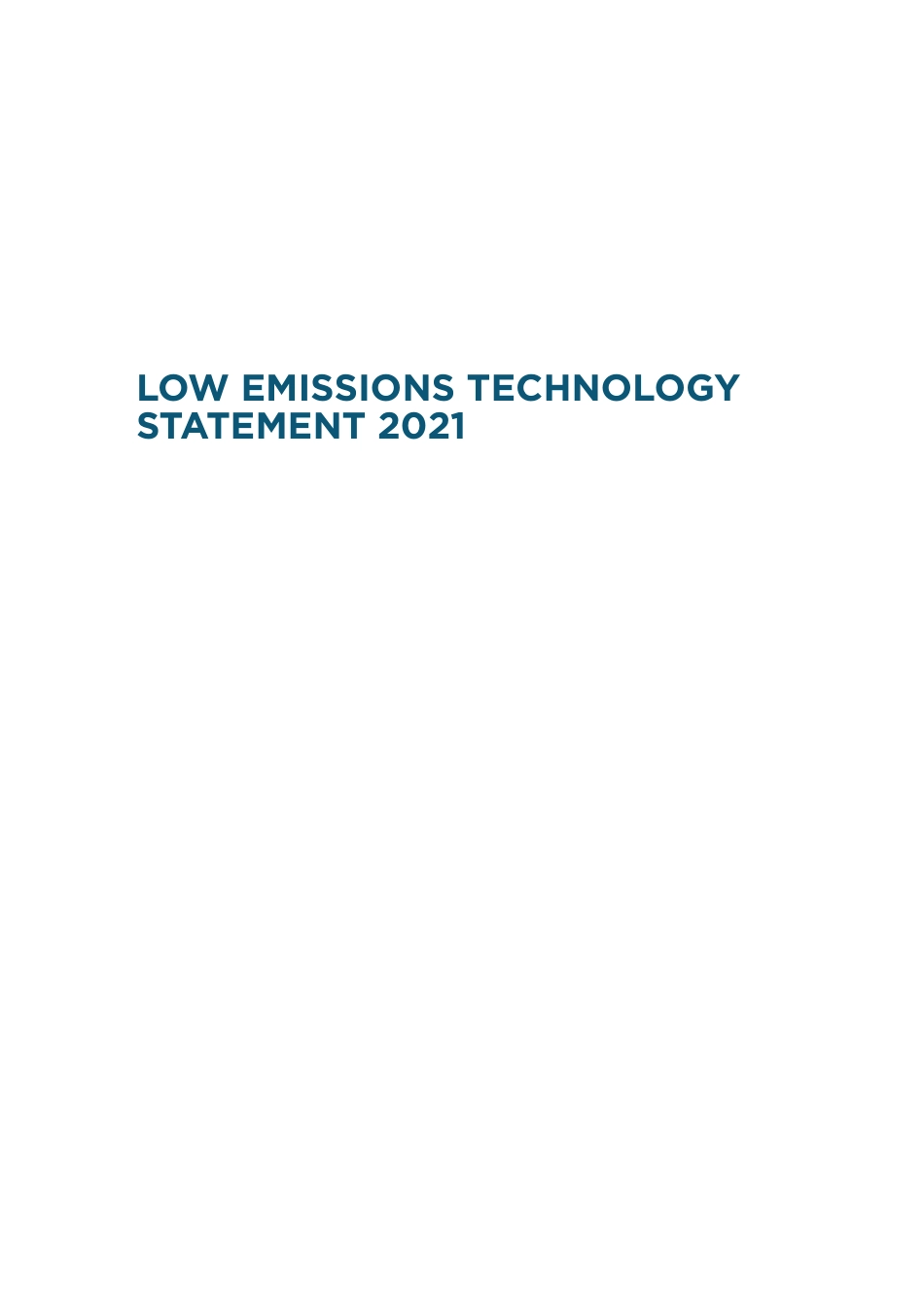LOW EMISSIONS TECHNOLOGY STATEMENT 2021COPYRIGHT© Commonwealth of Australia 2021Ownership of intellectual property rightsUnless otherwise noted, copyright (and any other intellectual property rights, if any) in this publication is owned by the Commonwealth of Australia.Creative Commons Attribution 4.0 International Licence CC BY 4.0All material in this publication is licensed under a Creative Commons Attribution 4.0 International Licence, with the exception of:• the Commonwealth Coat of Arms• content supplied by third parties• logos• any material protected by trademark or otherwise noted in this publication.Creative Commons Attribution 4.0 International Licence is a standard form licence agreement that allows you to copy, distribute, transmit and adapt this publication provided you attribute the work. A summary of the licence terms is available from https://creativecommons.org/licenses/by/4.0/. The full licence terms are available from https://creativecommons.org/licenses/by/4.0/legalcode.Content contained herein should be attributed as:LOW EMISSIONS TECHNOLOGY STATEMENT 2021Australian Government Department of Industry, Science, Energy and Resources.This notice excludes the Commonwealth Coat of Arms, any logos and any material protected by trademark or otherwise noted in the publication, from the application of the Creative Commons licence. These are all forms of property which the Commonwealth cannot or usually would not licence others to use.ISBN: Print: 978-1-922125-95-8 Online: 978-1-922125-94-1DISCLAIMERThe Commonwealth as represented by the Department of Industry, Science, Energy and Resources has exercised due care and skill in the preparation and compilation of the information in this publication.The Commonwealth does not guar...



